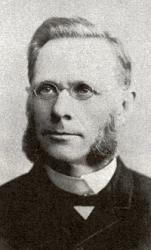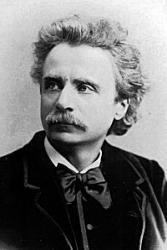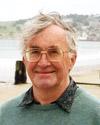Planning worship?
Check out our sister site, ZeteoSearch.org,
for 20+ additional resources related to your search.
- |
User Links
Person Results
Maria Tiddeman
Person Name: Maria Tiddeman (1837-1915) Meter: 6.6.6.6 Composer of "IBSTONE" in Hymns for Today's Church (2nd ed.)
Maria Tiddeman
J. E. Seddon
1915 - 1983 Meter: 6.6.6.6 Author of "I Worship You, O LORD" James E. Seddon (b. Ormskirk, Lancashire, England, 1915; d. London, England, 1983) received his musical training at the London College of Music and Trinity College in London and his theological training at the Bible Churchmen's Theological College (now Trinity College) in Bristol. He served various Anglican parishes in England from 1939 to 1945 as well as from 1967 to 1980. Seddon was a missionary in Morocco from 1945 to 1955 and the home secretary for the Bible Churchmen's Missionary Society from 1955 to 1967. Many of his thirty hymns are based on missionary themes; he wrote some in Arabic while he lived in Morocco. Seddon joined other Jubilate Group participants to produce Psalm Praise (1973) and Hymns for Today's Church (1982).
Bert Polman
J. E. Seddon
James Russell Woodford

1820 - 1885 Person Name: James Russell Woodford, 1820-85 Meter: 6.6.6.6 Translator of "God from on high hath heard" in The Methodist Hymn-Book with Tunes Woodford, James Russell, D.D., was born April 30, 1820, and educated at Merchant Taylors School, and Pembroke College, Cambridge, of which he was a scholar; B.A. Senior Optime, and 2nd class in the Classical Tripos. He was ordained in 1843, and became second Master in Bishop's College, Bristol; and Curate of St. John the Baptist, Broad Street, in that city. He became Incumbent of St. Saviour's, Coalpit Heath, 1845; of St. Mark's, Easton, Bristol, 1848; and Vicar of Kempsford, Gloucestershire, 1855. In 1868 he was preferred by the Crown to the important vicarage of Leeds on Dr. Atlay's appointment as Bishop of Hereford. He was several times Select Preacher at Cambridge. He was also Hon. Chaplain to the Queen (1867). In 1873 he was consecrated, in Westminster Abbey, Bishop of Ely. He died at Ely on Oct. 24, 1885.
Bishop Woodford published Sermons, 1853; Lectures for Holy Week, 1853; Lectures on the Creed, 1853; Sermons, 1864; and Sermons, Charges, &c, at later dates. His Hymns arranged for the Sundays and Holy Days of the Church of England appeared in 1852 and 1855. He also joined H. W. Beadon, and Greville Phillimore in editing The Parish Hymn Book, 1863, and (enlarged) 1875. To these collections his original hymns, and his translations from the Latin, were contributed. The originals include:—
1. Lamb of God, for sinners slain. Passiontide. 1852.
2. Not by Thy mighty hand. Epiphany. 1863.
3. O come, and with the early morn. Easter. 1852.
4. Within the Father's house. Epiphany. 1863.
Bishop Woodford's translations are annotated under their respective Latin first lines. They are good and popular, the best known being "Thee we adore, O hidden Saviour, Thee."
-- John Julian, Dictionary of Hymnology (1907)
James Russell Woodford
Nils Frykman

1842 - 1911 Person Name: Nils Frykman, 1842-1911 Meter: 6.6.6.6 Author of "Whosoe'er, Anywhere" in The Covenant Hymnal Born: October 20, 1842, Sunne, Värmland, Sweden (birth name: Nils Larsson).
Died: March 30, 1911, Minneapolis, Minnesota.
Buried: Lakewood Cemetery, Minneapolis, Minnesota.
Nils took the name Frykman after the region where he grew up, Fryksdalen. In 1868, he graduated from teachers’ college in Karlstad, and went on to teach in Grums, Norrköping, and Sunne. He preached in the church in Sunne, and around that time began to write hymns. Eventually, his texts were printed in the magazine Sanningsvittnet. However, Frykman’s work was not sanctioned by Sweden’s state church, and almost led to the loss of his job as a teacher. Eventually he did resign his position over a controversy about his children’s baptism by an independent preacher. In 1888, he was called to serve as pastor in the Tabernacle Church in Chicago, Illinois, and later in Salem, Minnesota. After 18 years, he retired to Minneapolis. He also served in the Northwest Mission Association of the Covenant Church, as denominational vice-chairman, Ministerial Board chairman, the Northwest Ministerial Association chairman, and as chairman of the committee to publish the Swedish-American Covenant church’s first hymnal in 1906. His works include:
The History of My Songs
--www.hymntime.com/tch
Nils Frykman
Carl Maria von Weber

1786 - 1826 Meter: 6.6.6.6 Arranged from of "JEWETT" in Christian Classics Ethereal Hymnary Carl Maria von Weber; b. 1786, Oldenburg; d. 1826, London
Evangelical Lutheran Hymnal, 1908
Carl Maria von Weber
Edvard Grieg

1843 - 1907 Person Name: Edvard Grieg, 1843-1907 Meter: 6.6.6.6 Composer of "GRIEG" in Trinity Hymnal (Rev. ed.) Edvard Hagerup Grieg Born at Bergen, Norway, of Scottish descent, son of a merchant and vice-consul in Bergen, his mother was a music teacher. He became a pianist and composer, with his standard classical repertoire known worldwide. He developed Norwegian folk music into his own compositions, helping to develop a national musical identity. As a child his mother taught him piano from age six. He attended several schools. His uncle, a Norwegian violinist, recognized his nephew’s talents at age 15 and urged his parents to send him to the Leigzig Conservatory in Germany. He enrolled there and concentrated on piano. He enjoyed the many concerts and recitals given in Leipzig. He disliked the discipline of the conservatory course of study, but he loved the organ, mandatory for piano students. In 1860 he survived a life-threatening lung disease, pleurisy and tuberculosis. Throughout life, his health was impaired by a destroyed left lung and disformity of his thoracic spine. He suffered numerous respiratory infections, and ultimately developed combined heart and lung failure. He was admitted many times for various spas and sanatoria in both Norway and abroad. Several of his doctors became close friends. In 1861 he made his debut as a concert pianist at Karlshamm, Sweden. He finished Leipzig studies in 1862 and held a concert in his hometown, playing Beethoven’s ‘Pathetique’ sonata. In 1863 he went to Copenhagen, Denmark, remaining there three years. There he met Danish composers and a fellow Norwegian composer, Rikard Nordraak, who wrote the Norwegian National Anthem. When Nordraak died in 1866, Grieg composed a funeral march in his honor. In 1867 Grieg married his first cousin, Nina Hagerup. Their only child, Alexandra, was born the following year. She died from meningitis at age two. In 1868 he wrote his Piano Concerto in A-minor. It was performed by Edmund Nuepert in Copenhagen because Grieg was in Norway at the time, fulfilling other commitments. In 1868 Franz Liszt, not yet having met Grieg, wrote a testimonial of him, resulting in Grieg’s obtaining a travel grant. The two met in Rome in 1870. Each was impressed with the other’s musical accomplishments. Grieg had close ties with the Bergen Philharmonic Orchestra and became its leader 1880-1882. In 1888 Grieg met Tchaikovsky in Leipzig. He was struck by Tchaikovsky’s sadness. Tchaikovsky praised Grieg’s music. The Norwegian government awarded Grieg a pension. In 1903 he made gramophone recordings of his piano music in Paris, France. He also made live piano music rolls for the Hupfeld Phonola piano-player system and Weldt-Mignon reproducing system. He also worked with the Aeolian Company for its ‘Autograph Metro-style’ piano roll series, wherein he indicated the tempo mapping of many of his pieces. In 1906 he met pianist and composer, Percy Grainger, in London. Grainger was an admire of Grieg’s music, and they developed a strong empathy for each other. Grieg wrote of Grainger: “I have written Norwegian dances that no one in my country can play, and here comes this Australian who plays them as they ought to be played. He is a genius that we Scandinavians cannot do other than love.” Grieg and his wife considered themselves Unitarians, and attended that church denomination. When Grieg died after a long illness, at age 64, his funeral drew more than 30,000 people in his hometown, who came out to honor him. His own funeral march, in honor of Nordraak, was played, along with a 2nd march, by his friend, Johan Halvorsen, who married Grieg’s niece. Grieg was cremated, with ashes entombed in a mountain crypt. Later, his wife’s were placed with his.
John Perry
Edvard Grieg
Johann Scheffler
1624 - 1677 Meter: 6.6.6.6 Author of "The Soul Wherein God Dwells" in The Cyber Hymnal Used Angelus Silesius as a pen name. See also Angelus Silesius, 1624-1677
Johann Scheffler
J. Calvin Bushey
1847 - 1929 Meter: 6.6.6.6 Composer of "MCINTOSH" James Calvin Bushey USA 1847-1929. Born in Arendtsville, PA, Bushey was a singing teacher who lived in Ohio during the latter 19th century. He compiled several music collections, including “The Chorus Class” (1879), “Sparkling Gems” (1880), “Choral Climax” (1886), and “Magneic Melodies” (1892), all published by the Music firm of Will L. Thompson. Bushey moved to Peoria,IL, late in life and died there.
John Perry
J. Calvin Bushey
David Mowbray

b. 1938 Person Name: David Mowbray, b. 1938 Meter: 6.6.6.6 Author of "With all my heart I seek" in The Irish Presbyterian Hymnbook David Mowbray (b. 1938) was born in Wallington, Surrey, England. He attended Dulwich College, Fitzwilliam, Cambridge where he read English. He gained an MA at Trinity in Bristol and a BD at London (External). Ordained in the Church of England, he was a curate at St. Giles in Northampton and at St. Mary's in Walford. Appointed Vicar of Broxborne, Herts in 1970 in 1984, he became Vicar of All Saints, Hertfordshire. In 1991 he became Vicar of St. Matthew's Darley Abbey, Derby, where he serves to this day. He has been writing hymns since 1977 and most of his texts are represented by Jubilate Hymns. Three of his hymn texts have been included in Hope's new hymnal Worship & Rejoice (2001).
--www.hopepublishing.com
David Mowbray


 My Starred Hymns
My Starred Hymns


